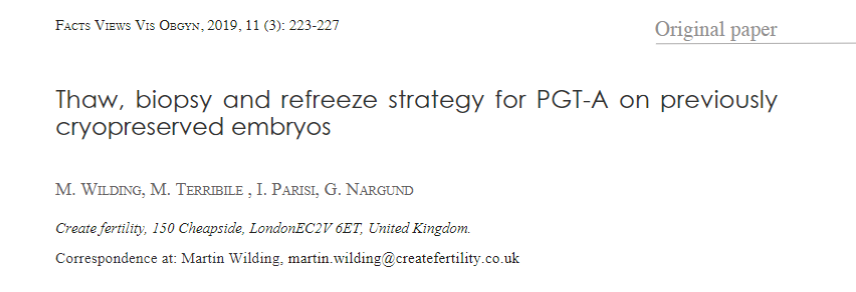
Patients wishing to have PGT-A on previously cryopreserved embryos are currently limited from accessing this technique due to the requirement for refreezing of the embryos. Embryo cryopreservation techniques have, however, significantly improved in the recent years due the introduction of the vitrification method.
Researchers from Create Fertility in UK have compared results obtained after traditional PGT-A with results after the thaw, biopsy and refreeze (TBR) procedure. Their results have shown that clinical pregnancy (52.4% vs 61.5%) and ongoing pregnancy (72.7 vs 87.5%) were not significantly different between the two groups. Furthermore, embryo survival rate was 100% for both groups and proportion of PGT-A normal embryos (28.2% vs 17.8%) was also comparable.
Refreezing describes the process of cryopreservation of previously frozen-thawed embryos for future use. The application of the vitrification technique has significantly improved the reliability of both, embryo freezing and the refreeze technique. Although the literature suggests that the refreezing of embryos is a promising tool for the field of assisted reproduction, practical uses for embryo refreezing have not been developed.
Data from this study, therefore, demonstrates that the thaw of previously vitrified embryos followed by biopsy and refreezing with the Cryotop® Method is effective in maintaining the viability of embryos and can be used to analyse previously cryopreserved embryos with PGT-A.
Wilding W., Terribile M., Parisi I., Nargund G. Create Fertility UK. Thaw, biopsy and refreeze strategy for PGT-A on previously cryopreserved embryos. Facts Views Vis Obgyn, 2019. Link to the study.